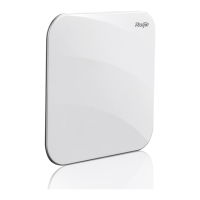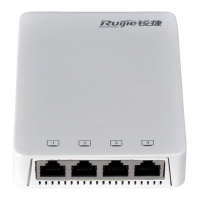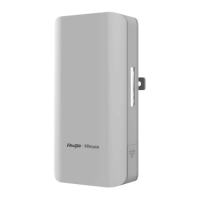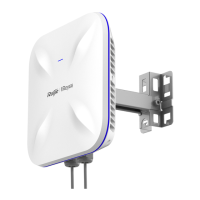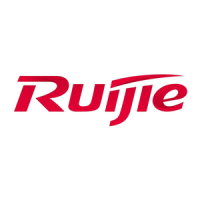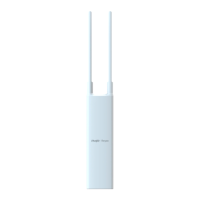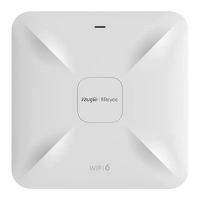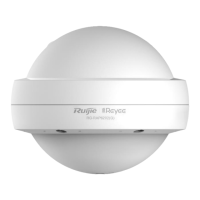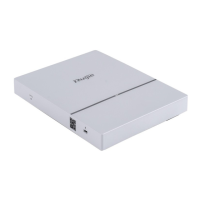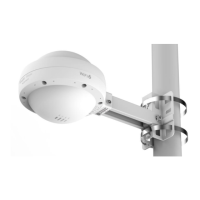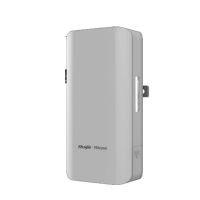Configuration Guide Configuring FAT APs
A country code is used to identify a country where radio frequencies reside. The bands, channels, and power vary with
country codes. Before configuring an AP, it is required to specify the country code supported by this AP. If the configured
country code changes, the corresponding bands, channels and power also change.
Configuring the Receiving and Transmitting Modes of Antennas
An AP uses different quantities of antennas for data receiving and transmitting. In this way, the AP can transmit signals in the
double spatial stream mode or three spatial stream mode over 802.11n, thus improving the data transmission performance of
the AP.
Configuring an Internal Antenna and External Antenna
An internal antenna is an antenna that is integrated inside the enclosure of an AP. An external antenna is an antenna that
can be connected through the reserved hardware interface of an AP. Under the same transmission power, an external
antenna provides a longer distance of transmission than an internal antenna.
Configuring the Allowable Longest Distance Between an RFInterface of an AP and a Wireless Transmission
Peer
Wireless signals are transmitted in space at the optical speed. The longer distance between an RF interface of an AP and a
wireless transmission peer, the longer time needed for transmitting wireless packets in space, and the longer the timeout
duration needed for the AP to wait for ACK and CTS frames to be received. Therefore, it is necessary to adjust the timeout
duration according to the distance between the RF interface of the AP and the wireless transmission peer; otherwise,
wireless data transmission cannot be performed. However, the timeout duration cannot be excessively long; otherwise, the
excessive timeout duration may cause air interface resource waste when the AP does not receive ACK and CTS frames.
1.3.4 Setting E-bag Parameters
Set the e-bag parameters of the AP and associated RF interfaces.
Working Principle
In a scenario using e-bag, it is often necessary to configure some commands to achieve better experience. The one-key
e-bag network optimization command can be used for fast configuration.
AMPDU
A-MPDU aggregation.
LDPC
Low Density Parity Check (LDPC) is a type of excellent linear error correction code that is easy to implement and with low
system complexity. LDPC is a Forward Error Correction (FEC) coding technology which can increase the coding reliability
and coding gain. This technology was developed at the beginning of 1960s. It can be used to transmit information among
noisy frequencies with amounts of background or damaged content. When being used in frequencies with seriously noisy
interference, this technology can significantly reduce the risk of information losses. However, a few terminals are not
compatible with LDPC, which causes packet losses.
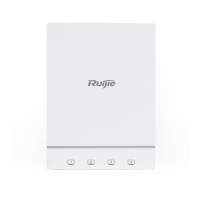
